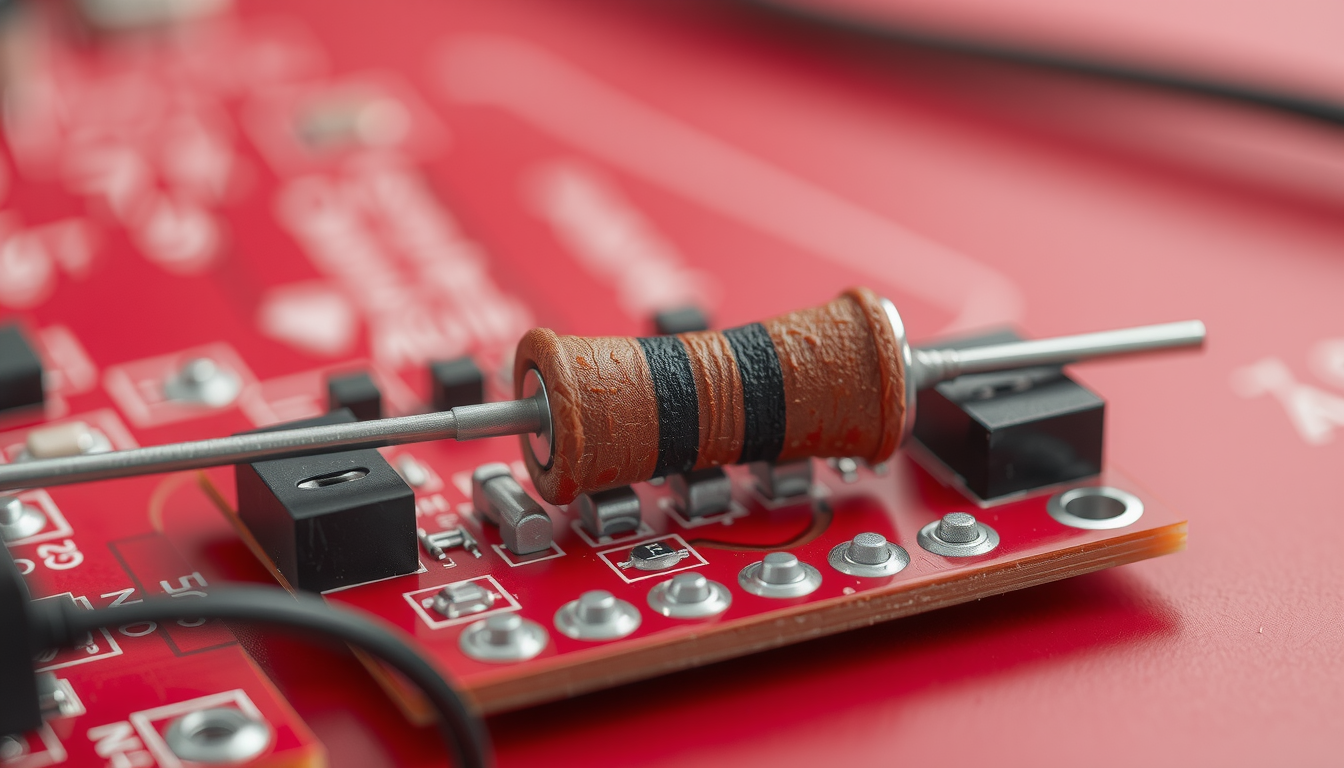The electronic resistor is a cornerstone of modern electronics, a device so fundamental that it’s hard to imagine a circuit without it. Its history is deeply intertwined with the evolution of electrical science, from the early exploration of electricity to the sophisticated technologies of today.
Early Foundations: The Discovery of Resistance
The concept of resistance was first explored in the early 19th century during the burgeoning study of electricity.
-
Ohm's Law (1827)
- Georg Simon Ohm, a German physicist, mathematically defined the relationship between voltage, current, and resistance.
- His work established the foundational formula: V=IRV = IR, where VV is voltage, II is current, and RR is resistance.
- Ohm’s discoveries laid the theoretical groundwork for creating devices that could control and limit current flow.
-
Early Resistive Materials
- Experimenters of the time used materials like water, charcoal, and wires to study resistance.
- These rudimentary resistors were far from the precision components we use today but demonstrated the potential for controlling electrical currents.
The First Practical Resistors
-
Carbon-Based Resistors (Late 19th Century)
- As electrical systems developed, the need for reliable and standardized resistors grew.
- Early resistors were made from compressed carbon powder, which offered stable resistance and was relatively easy to produce.
- These resistors were used in telegraphy and early radio systems.
-
Wire-Wound Resistors (Late 19th to Early 20th Century)
- Wire-wound resistors were introduced for applications requiring high power and precision.
- They were made by winding a resistive wire, typically an alloy like nichrome, around a ceramic core.
- This design provided excellent stability and heat dissipation.
Resistor Development in the 20th Century
-
The Age of Standardization
- The 1920s and 1930s saw the standardization of resistor values and manufacturing techniques.
- Color coding systems, introduced in the 1920s, allowed easy identification of resistance values and tolerances.
-
Carbon Film and Composition Resistors
- The mid-20th century saw the rise of carbon film resistors, which used a thin layer of carbon on a ceramic core.
- These were smaller, cheaper, and more reliable than earlier carbon composition resistors.
-
Metal Film and Oxide Resistors
- By the 1960s, metal film resistors emerged, offering improved precision and stability over temperature changes.
- Metal oxide resistors were introduced for high-power applications, offering superior durability and heat resistance.
-
Surface-Mount Resistors
- The invention of surface-mount technology (SMT) in the 1980s revolutionized resistor design.
- SMT resistors are compact, reliable, and ideal for automated assembly, making them a staple in modern electronics.
Modern Innovations in Resistor Technology
-
Thin Film and Thick Film Resistors
- Thin film resistors use an ultra-thin metallic layer, allowing for extremely high precision.
- Thick film resistors, made using printed resistive pastes, are widely used in cost-sensitive applications.
-
Variable Resistors and Potentiometers
- Variable resistors, such as potentiometers, allow for adjustable resistance.
- They are crucial in applications like volume controls and tuning circuits.
-
Power and Specialty Resistors
- High-power resistors with advanced heat dissipation technologies cater to industrial and automotive needs.
- Specialty resistors, like shunt resistors for current sensing, are vital in energy monitoring and advanced electronics.
Impact of Resistors on Technology
The development of resistors has mirrored the advancement of electrical and electronic technologies. From enabling early communication systems like the telegraph to forming the backbone of modern computers and smartphones, resistors have played a pivotal role.
Conclusion
The electronic resistor, simple yet indispensable, has evolved from rudimentary experiments in resistance to a highly refined component tailored for diverse applications. Its history is a testament to human ingenuity and the relentless pursuit of progress in understanding and harnessing electricity. The resistor’s journey continues as new materials and technologies push the boundaries of what is possible in electronics.
